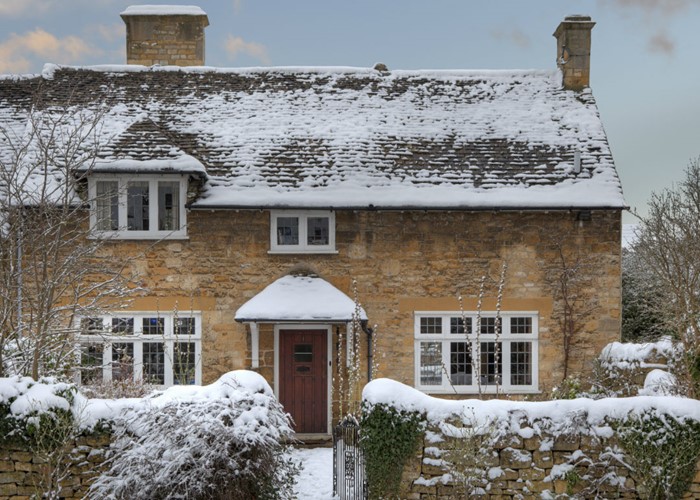A place for 100% mortgage deals?

The Prime Minister wants to ban 100%-plus mortgages, but is he right?
Gordon Brown has suggested banning 100%-plus mortgages, which offered the chance to borrow more than the price of the property. He has called for a return to 'traditional banking methods' and 'prudent and careful lending'.
The Prime Minister has asked the Financial Services Authority to look at the possibility of controls on the issuing of mortgages of more than 100% of a home's value. He is, of course, about a year late, as market forces have effectively already achieved this -- for the time being anyway. Nobody has offered a 100%-plus mortgage since the credit crunch kicked in, so the horse has well and truly bolted.
The mortgages were pretty controversial even when they were launched in the pre-crunch era. At the time questions were raised over irresponsible lending, but either the concerns were not expressed loudly enough, or there was nobody listening.
What are 100%-plus deals?
100%-plus mortgages offer the borrower a mortgage of more than the value of the property -- for example a loan-to-value (LTV) of 125%.
So you could buy a property for £200,000 and actually get a mortgage of £250,000.
The idea behind this was that many borrowers, particularly first-time buyers, have a lot of other expenses such as stamp duty, fees, and the cost of furnishing their new home. By borrowing more than 100% of the property's value they got the extra cash to cover this.
Northern Rock, HBOS and Bradford and Bingley were active in this market back in 2007.
Why lend so much?
The lenders justified it in three ways: Firstly in a rising property prices environment, the borrower could quickly move into a position of equity, where the property was worth more than the debt. On the example above the property would become 90% LTV once the price had reached £278,000 for example. In the boom time this would have only taken a few years.
Of course, it was ridiculous assumption that house prices would continue to rise without interruption -- but that was pretty much the thinking at the time.
Secondly, 100%-plus mortgages were priced at a premium to offset the greater risk. So the mortgage rates were higher for these borrowers. Lenders made a greater profit and this would offset any losses incurred through defaults and repossessions.
And finally, some of these deals had secured and unsecured elements. For example, even though you could borrow 125% of a property's value, you could only get a certain proportion on a secured basis. The rest was effectively a large unsecured loan. So, on the £200,000 property example you might get a secured mortgage of £190,000 and a £60,000 unsecured loan.
These figures are just examples and it is only fair to point out that the lenders offering these mortgages really did have strict criteria and restrictions in place. Perhaps not strict enough, but they rejected many more applications than they accepted. There were low maximum borrowing limits, high minimum incomes and strict affordability criteria.
As an aside, I believe a far bigger problem was the widespread acceptance of 95% and 100% mortgages with far fewer restrictions -- indeed these loans were very common and under little scrutiny.
Kick-start lending
Brown needs to tread a fine line, because the current situation of low LTV lending is also unwelcome. It's hard for first-time buyers to get on the housing ladder at the moment and Brown admits that it is vital that first-time buyers on modest incomes with small deposits are still able to get mortgages.
What he doesn't want is for those with no deposit whatsoever to get a home loan. And, to be fair, this is a stance probably broadly accepted by many.
But the Council of Mortgage Lenders has pointed out that although it agrees with the 'inherent appeal of a simple policy such as this to mitigate risk and encourage responsible borrowing' there are issues that should be considered.
A need for 100%?
The trade body says that the PM should consider those borrowers who want to move house but whose own house price has fallen. Without 100% (or 100%-plus products) these borrowers are stuck. They may be able to afford their mortgage comfortably but they are stranded on it, and in their home, whether or not they are on a decent rate. And while many lenders' standard variable rates are at record lows, many are still expensive at 6%.
Another issue is the shared equity loans made to the affordable housing sector, where borrowers are not asked to pay a deposit. The Government Homebuy Schemes available to key workers do not always require money upfront. Or they may require a 10% deposit on a 25% share of the property, effectively a 2.5% deposit, which would not currently be available in the wider market. The schemes are a vital way into homeownership for many people, but they don't sit well with a policy of banning 'no deposit deals'.
Finally, high LTV borrowers are not just first-time buyers or homemovers. Many customers have increased their borrowing, and therefore LTV, in order to consolidate debts or raise funds. Being unable to remortgage to a high LTV now could leave them prey to second charge or secured loan providers who will charge them more, and still require security against the property.
In other words, you lender may only offer you 80% LTV but you could increase this on a secured basis through second charge lenders, at much higher rates of interest. It seems like a topsy-turvy way of doing things, and comes with risks, but it is also a real possibility.
Compare mortgages with lovemoney.com
Comments
Be the first to comment
Do you want to comment on this article? You need to be signed in for this feature